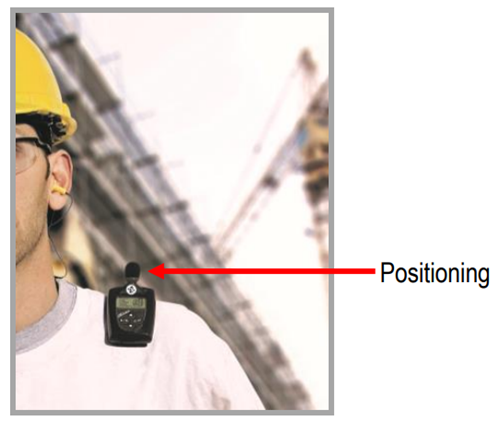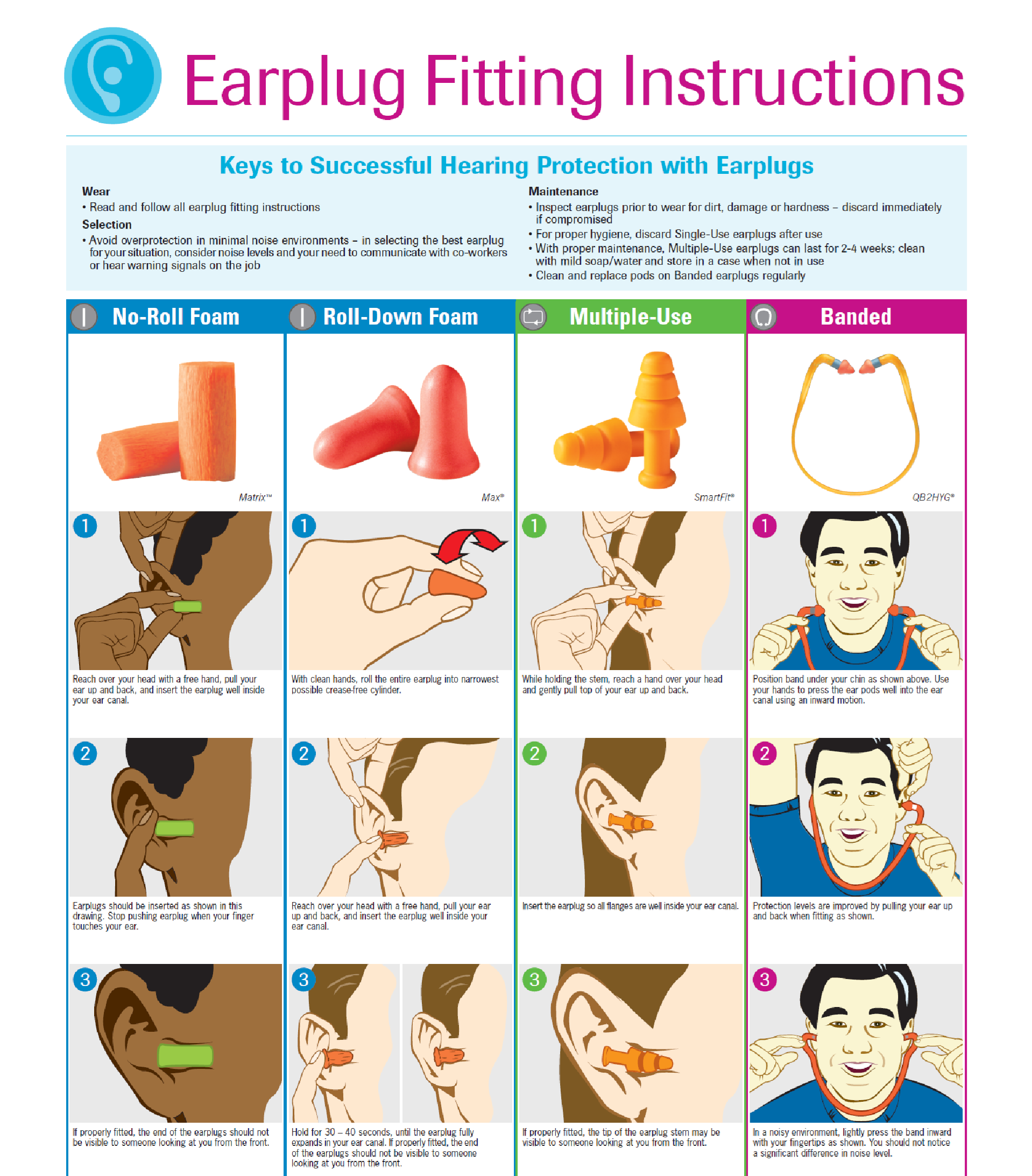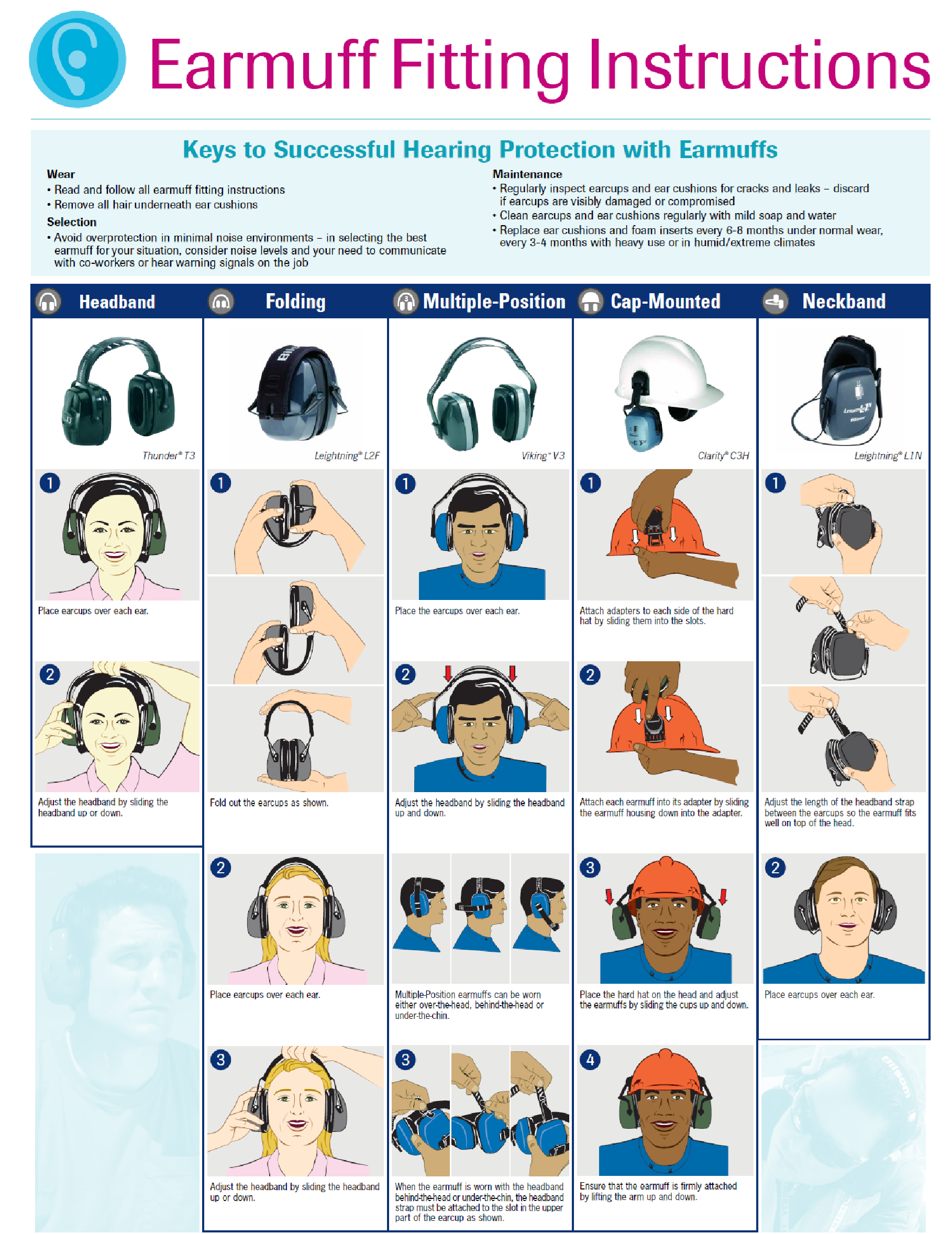The following terms are used in this document. The definitions below are used in the scope of this document, but local regulatory definitions supersede if there is a conflict.
Action Level: Noise level at which specific actions must be taken to control noise exposure in the workplace. Action levels may vary by regulatory jurisdiction.
Administrative Controls: The use of employee training, job or task rotation, safe work practices, exposure monitoring, or medical surveillance to protect workers from exposures to workplace hazards.
Area Noise Survey: Area noise surveys are performed periodically to assess and document the overall noise levels of the work area, identify areas requiring the use of hearing protection, and are often documented via a noise map of a site.
Audiometric Testing: Measurement of an individual’s ability to detect sounds, over a set of standardized frequencies. Such testing generally starts with baseline measurements, and is then repeated annually, to detect changes in hearing over time.
Criterion Level: The continuous equivalent 8-hour A-weighted sound level (as dBA) that constitutes 100% of an allowable noise exposure (dose)—in other words, the permissible exposure limit (PEL).
Decibels (dB): A dimensionless unit commonly used to describe sound level intensity and hearing thresholds.
dBA: Decibel scale modified by an A-weighted system. In the A-weighted system, the decibel values of sounds at low frequencies are adjusted. This adjustment accounts for the relative insensitivity of the human ear at low audio frequencies, especially below 1000 Hz.
Dose (%): Related to the criterion level, a dose reading of 100% is the maximum allowable exposure to accumulated noise. For OSHA, 100% dose occurs for an average sound level of 90 dB over an 8-hour period (or an equivalent exposure). If a TWA reading is used rather than the average sound level, the time period is no longer explicitly needed. A TWA of 90 dB is the equivalent of 100% dose. The dose doubles every time the TWA increases by the exchange rate.
Engineering Controls: The elimination or reduction of a hazard by means of engineered machinery or equipment. Examples include process change, isolation, ventilation, and source modification.
Hearing Conservation Program: Standards and procedures to reduce the risk for noise-induced hearing loss in the workplace. Elements include noise monitoring, noise controls, audiometric evaluation, and training. Employees with a measured 8-hour TWA greater than 85 dBA, on any one day, must be included in a hearing conservation program.
Hearing Protection: Ear plugs or earmuffs worn by individuals to reduce sound exposures, before the implementation of engineering and administrative controls, or when such controls are not feasible.
High-Noise Area: An area that regularly has a noise level at or above 85 dBA.
Noise Dosimeter: A type of sound level meter that measures the dose of noise. This instrument can calculate the daily noise dose based on a full work shift of measurements, or a dose from a shorter sample. The operator can select different noise dose criteria, exchange rates, and thresholds.
Noise Reduction Rating (NRR): A numerical average attenuation provided by hearing protection devices. The higher the NRR, the greater the sound attenuation provided by the device, which reduces overall noise exposures for an individual.
Occupational Exposure Limit (OEL): The maximum allowable noise level that an employee may be exposed to in the workplace for a given exposure time.
Personal Noise Monitoring (Dosimetry): Monitoring of an employee’s workplace noise exposure throughout the duration of their work shift using a personal noise dosimeter.
Risk Assessment: The process of quantifying the probability and severity of a harmful effect to individuals or populations from certain human activities.
Sound level meter: An instrument that converts sound pressure in air into corresponding electronic signals. The signals may be filtered to correspond to certain sound weightings (e.g. A-weighted scale, C-weighted scale).
Standard Threshold Shift (STS): A change of 10 dB or more in the average of hearing thresholds at testing frequencies of 2,000, 3,000, and 4,000 Hertz in either ear. The change is determined by comparing the current audiogram to a baseline audiogram. An STS may be temporary or permanent. A permanent STS requires specific follow-up actions by an employer within specific time frames.
Time-Weighted Average (TWA): Average exposure for an individual over a specified working period, as determined by sampling at given times during the period. The most frequently used exposure guideline term is the average concentration over an 8-hour workday.
Type 1/Type 2 (or Class 1 and Class 2): Two different accuracy specifications for noise measurements. Type 1 measurements are accurate to approximately ±1dB, and Type 2 measurements are accurate to approximately ±2dB. The accuracy of the measurements varies, however, depending on the frequency of the sound being measured.


